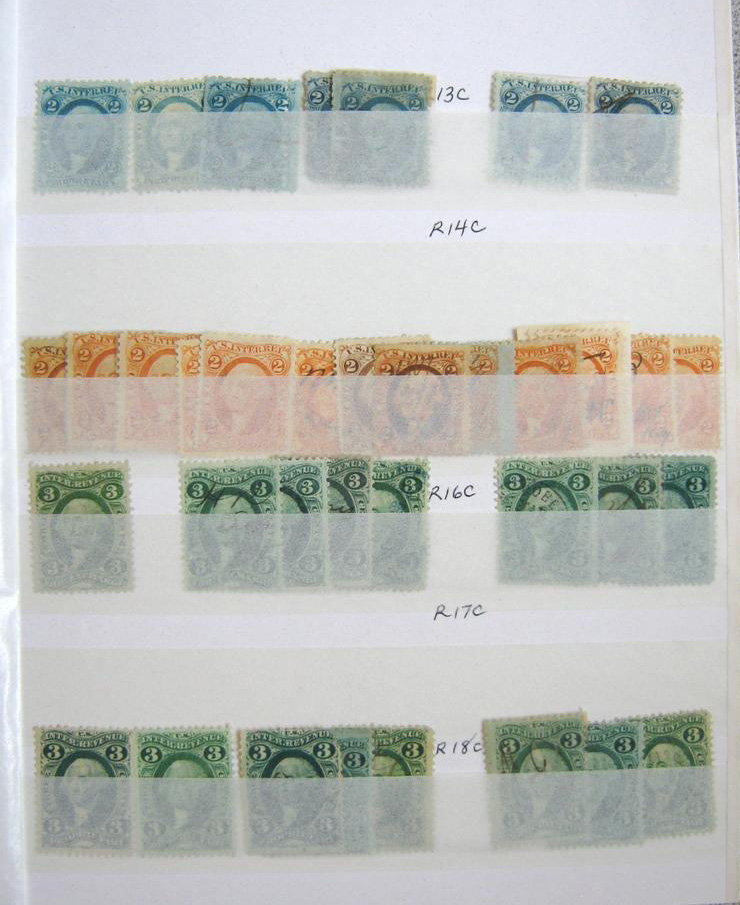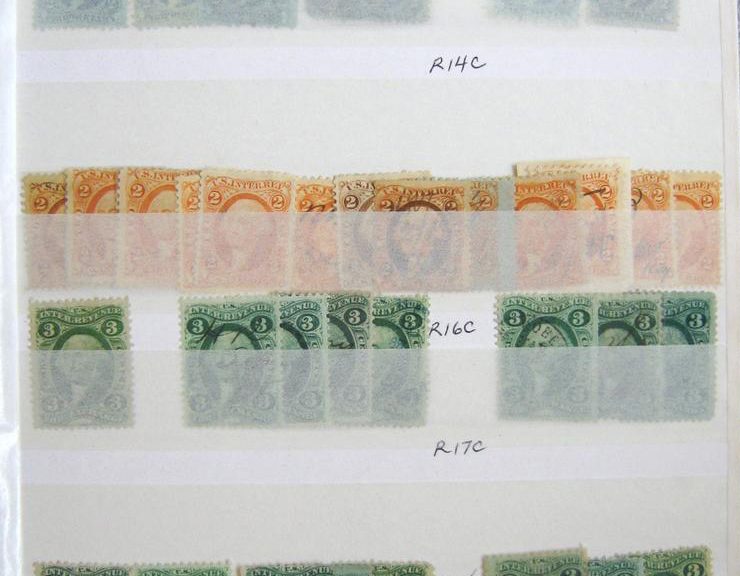
Finding a Truly Scarce Stamp in an eBay Collection
As much fun as it is to acquire a rare stamp as a single from a dealer at a stamp show, a brick & mortar stamp shop, or at auction, there’s something absolutely exhilarating about pulling a rare stamp from a collection or bulk lot… it’s a feeling of discovery, a triumph over the wilderness, beating the odds. 😉
I spotted the stamp in the following page (actual eBay image) from a 4-stockbook revenue lot on eBay. Of course the odds of it being legit based on this image were minimal. I couldn’t factor it into my max buy price, but only kept it in mind as flavor. There was plenty of good material in the lot to make it worthwhile even if this stamp were not what I thought it was.
Let’s see if you can spot it:
The auction closed without any bids and the seller accepted my offer. Upon receipt and close examination, the stamp looked good, so I sent it off to the Philatelic Foundation. It came back genuine.
Scott R15e, 2-cent USIR orange on green paper, is a VERY tough stamp. It only catalogs about double what an R6e (2-cent Bank Check on green paper) catalogs, but is much more scarce. I own two examples of R6e on document and have seen 3 others that I could have purchased. There are two R6e on eBay right now, although the paper color looks iffy on one of them.
R6e catalogs $700, which is probably a little light given its scarcity, but is fairly close. The R15e, at $1,500, is very undervalued given the population numbers. It probably should catalog in the $4,000 range.
Neither Eric Jackson nor Richard Friedberg have had one in stock for years. Eric says that he had one in 2008, and prior to that none since the 1990s. Richard says he has only handled one example in almost 40 years. He puts it at 5-10 times scarcer than the R6e.
I have been able to locate only three R15e appearances at auction since I started collecting U.S. revenues in 2002. To give you an idea of the stamp’s scarcity, the high-profile collections of Cunliffe, Tolman, and Joyce did not have any examples of R15e, despite the auctions having multiple examples of R6e (at least there were no R15e lotted as singles; I have no idea if there were any in the remainder lots).
Why isn’t the catalog value higher? In my opinion, a few reasons:
- It’s the age old story of perceived versus actual scarcity, and how the latter does not necessarily translate into higher catalog value, due to the difference in demand. For example, in my opinion the big Persian rug (R133, $17,500) isn’t actually scarce, nor is the big $5 Proprietary (RB9a, $11,000). Locating one is easy; all you need are deep pockets.It’s all subjective, but how do I personally draw the distinction? If I can walk into a national show like CHICAGOPEX in any year and know that I’ll have one or more examples to choose from, it’s not scarce… just expensive. On the other hand, if I go YEARS between seeing something either at auction or through specialists like Eric and Richard, then I consider it scarce.
To use a similar analogy for front-of-book collectors: dollar-value Columbians and Trans Mississippis and sets of zeps are common as dirt. You can’t swing a dead possum at any show, even small ones, without seeing a ton of examples of all of them. But their being considered “key values” and having strong demand keeps their market value high… but they are NOT scarce.
- Low population items only ever go up in Scott when there are auction or sale results to report. If the population is in single digits or only ever comes up every 5 years or so, the values remain stagnant. The way the Scott Catalog process works, a stamp’s scarcity can actually work against it. It’s even worse for rare stamps that catalog under $300 or so (and there are plenty of them in the back of the book; there are $50-150 value stamps I’ve never even seen, nor seen offered). This price range means most auction houses won’t lot the stamps as singles, but rather in groups or lots, making extrapolating values impossible, so they never get raised in the Scott catalogs.Some of the Scott values are laughable for truly scarce items that currently don’t catalog much… and they will never go up despite never being seen.
As an experiment, I decided to try to compile a quasi-census of R15e that have come up at auction, which gives you an idea of just how scarce a stamp it is. If you know of auction listings that I have not listed below, please contact me with the information. My thanks to Richard Friedberg for his assistance in compiling this list.
I do not have access to a complete run of Aldrich auction catalogs, so there might be others that he offered, not to mention others offered by auction houses who don’t have archives online or had high-profile revenue auctions. I contacted Michael Aldrich for his assistance in filling gaps but received no response.
October 24, 2012. Schuyler-Rumsey. The Bulkley Collection. No cert.

July 21, 2010. Spink USA. Collector’s Series. No cert. Did not sell or was withdrawn.
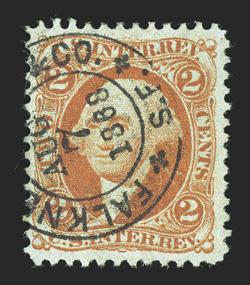
October 19, 2002. Spink USA. Collector’s Series. 1984 PF cert. Same stamp as Aldrich sale 25 in 1987.
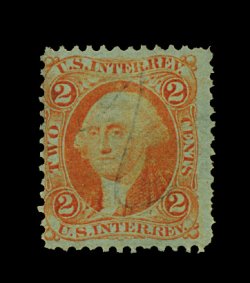
October 25, 2001. Spink USA. The William S. Floyd Collection. No cert.
Sorry, could not find a picture for this one.
April 11, 2001. Siegel Auctions. Sale 836. No cert.
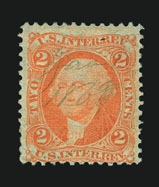
December 7, 1991 Michael Aldrich Auctions. Sale 34. 1991 PSE cert.
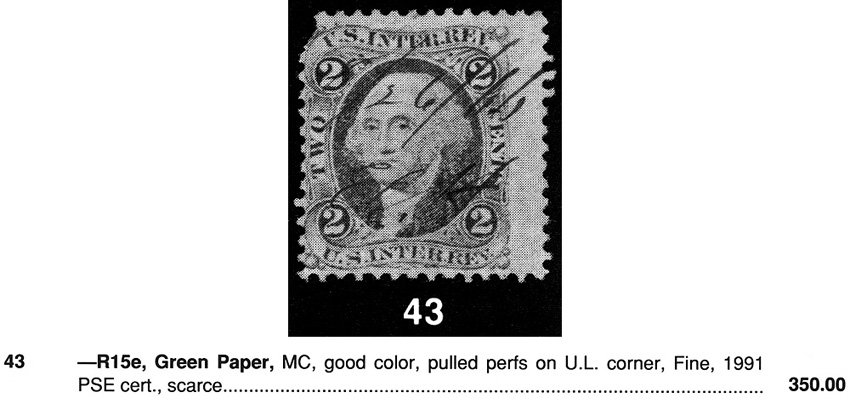
June 6, 1987. Michael Aldrich Auctions. Sale 25. 1984 PF cert.
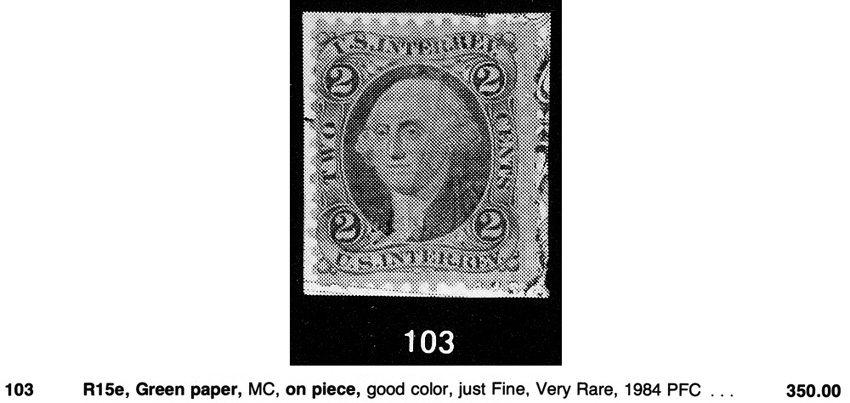
May 25, 1986. Siegel Auctions. The Isleham Collection. No cert.
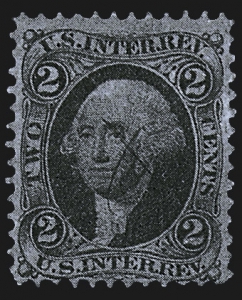
October 12, 1983. Siegel Auctions. Sale 624. Two examples. No certs.

October 18, 1979. H.R. Harmer. The Eastern Collection.
No picture available.
October 18-19, 1979. John W. Kaufman. Auction #58. Two examples, neither with cert.

March 3, 1970. Siegel Auctions. Sale 368. No cert.
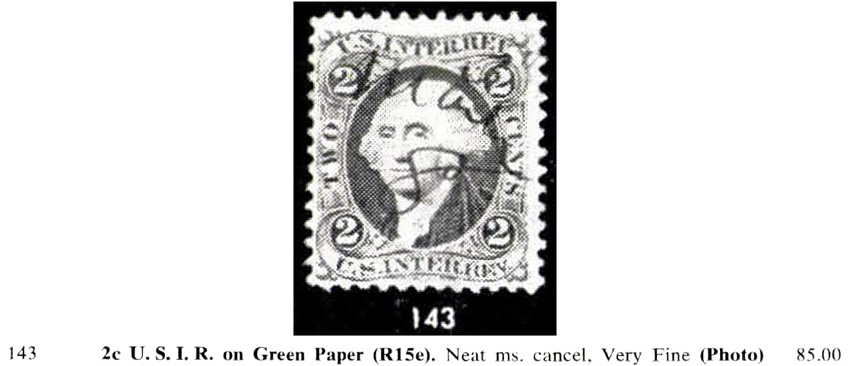
February 13, 1962. Siegel Auctions. The Philip Little Collection of U.S. Revenue Stamps. Two examples, neither with cert.
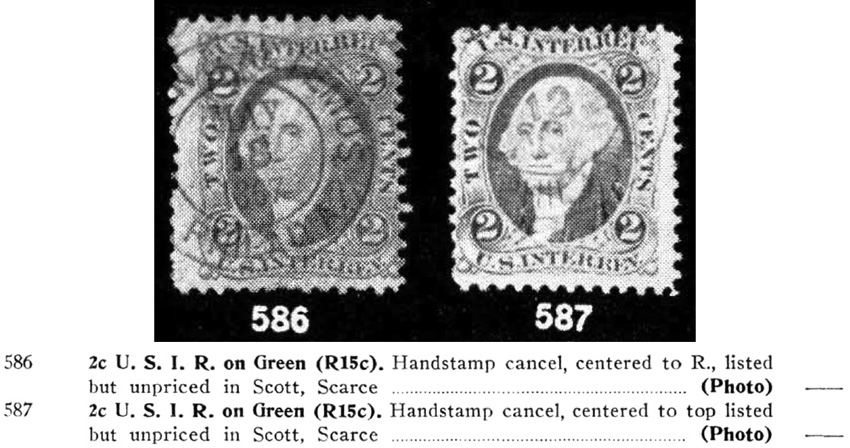
Certainly not an exhaustive list, but still… 16 readily found examples covering 50 years hardly makes for a common stamp.
At any rate, here is my newly frocked R15e. Not a shabby cherry on top of an otherwise stellar eBay lot!
